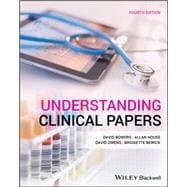For two decades, Understanding Clinical Papers has been helping students and professionals understand the research that supports evidence-based practice. Now in its fourth edition, this popular introductory textbook covers every major aspect of reading and evaluating clinical research literature, from identifying the aims and objectives of a paper to analysing the data with different multivariable methods. Numerous excerpts from actual clinical research papers make learning real and immediate, supported by a unique visual approach that reinforces key points and connects examples with the chapter material.
The fourth edition includes extensively revised content throughout, including four brand-new chapters covering qualitative studies, Poisson regression, studies of complex interventions, and research using previously collected data. New and updated material discusses the difference between clinical and statistical significance, the consequences of multiple testing and methods of correction, how topic guides are used to explore and explain participants' experiences, standardised guidelines for writing trials and reviews, and much more. Offering clear explanations of important research-related topics, this reader-friendly resource:
- Offers a clear, concise, and accessible approach to learning how to read and analyse clinical research literature
- Features new coverage of qualitative research, including descriptive studies, sampling and populations, and identifying, summarising, and measuring qualitative characteristics
- Provides new material on missing data, sub-group analysis, feasibility and pilot studies, cluster randomised trials, and adaptive trial designs
- Includes new tables, abstracts, and excerpts from recent clinical research literature
Understanding Clinical Papers is essential reading for all healthcare professionals and students, particularly those involved in clinical work and medical research, as well as general readers wanting to improve their understanding of research literature.








